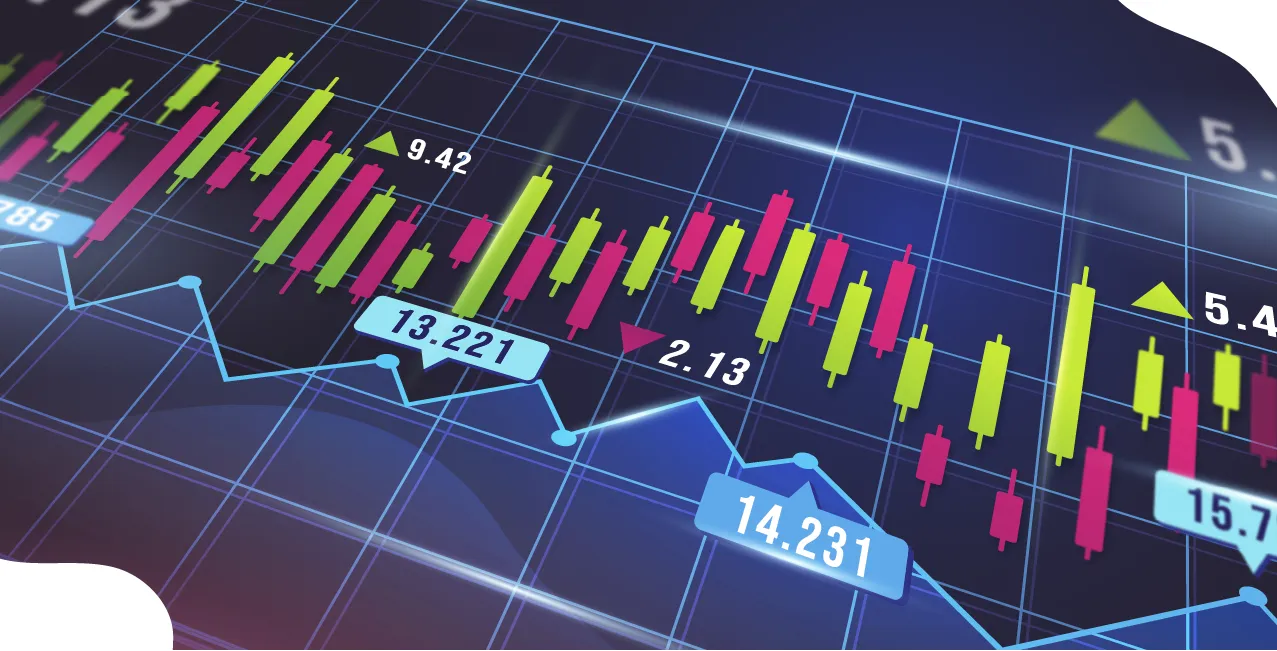
Author
LoansJagat Team
Read Time
6 Min
06 Aug 2025
What Are Derivatives In The Stock Market? Types, Uses & Risks
Derivatives are contracts whose value depends on assets like stocks, bonds, commodities, or currencies. They help investors hedge risks, speculate on price changes, or amplify gains through leveraged market positions.
Let’s say Priya, a jewellery trader in Delhi, expects gold prices to rise. Today, gold is ₹60,000 per 10g. She buys a futures contract to lock in this price for delivery after a month.
- After one month, gold hits ₹65,000 per 10g.
- Priya gains ₹5,000 on every 10g without even holding physical gold.
- She books 10 contracts, which means ₹50,000 profit!
Now that’s some smart trading, isn’t it interesting?
But hey, if gold had dropped to ₹58,000, she’d have lost ₹2,000 per contract.
That’s how derivatives work: tools to hedge risks, speculate smartly, or grab arbitrage profits.
This blog explains what derivatives are, how they work, their types, uses, risks, and who uses them in easy words.
What Are Derivatives?
Derivatives are financial contracts that gain value from an underlying asset, like stocks or commodities. They’re used for hedging, speculation, or leverage, with value changing as asset prices move daily.
Let’s understand it with the help of an example:
Let’s say you believe the price of gold will rise next month. Currently, gold is ₹6,000 per gram. You don’t want to buy physical gold now, but you still want to benefit if the price increases.
So, you enter into a futures contract to buy 100 grams of gold at ₹6,000 per gram, one month from today.
Scenario 1: Gold price rises
If the gold price rises to ₹6,500 per gram next month, you will still buy it at ₹6,000 as per the contract.
- Market value: ₹6,500 × 100 = ₹6,50,000
- Your cost: ₹6,000 × 100 = ₹6,00,000
Profit: ₹50,000
Scenario 2: Gold price drops
If gold drops to ₹5,800 per gram, you’re still bound to pay ₹6,000.
- Market value: ₹5,800 × 100 = ₹5,80,000
- Your cost: ₹6,00,000
Loss: ₹20,000
So, derivatives let you speculate or hedge based on future price changes without owning the asset now.
Key Players in the Derivatives Market:
Knowing market players helps us understand prices and movements. Their goals and actions also affect market flow and liquidity.
The derivatives market has four key players: hedgers, speculators, arbitrageurs, and market makers. Each group adds value by reducing risk, seeking profit, exploiting gaps, or providing market liquidity.
Read More – What is MTF in the stock market: Full Form, Usage & Margin Trading Explained
Let’s understand it with the help of an example:
Imagine wheat trades at ₹2,000/quintal in Delhi and ₹2,100/quintal in Mumbai.
An arbitrageur buys 100 quintals in Delhi (₹2,00,000) and sells them in Mumbai (₹2,10,000), earning ₹10,000 risk-free.
A hedger farmer locks in ₹2,000/quintal via futures to avoid a price drop during harvest.
A speculator predicts prices will rise to ₹2,200 and buys futures to profit ₹200/quintal.
A market maker quotes both buy/sell rates to keep trades moving and earns on the bid-ask spread.
Table: Key Players in the Derivatives Market
The derivatives market involves different participants, each playing a unique role with specific goals and risk levels.
Understanding these key players helps explain how derivatives markets function efficiently and remain liquid and balanced.
Types of Derivatives:
There are several types of derivatives, each with unique structures, purposes, and risk profiles suited to different market needs.
By understanding these derivative types and examples, investors can choose the right instruments to manage risk or seek profit.
What Are The Uses of Derivatives in the Stock Market?
Derivatives in the stock market serve various purposes, from reducing risk to generating profits through strategic trades.
Whether for hedging, speculation, or arbitrage, each use case offers unique benefits and risk levels for market participants.
Also Read - How to Learn Trading – Step-by-Step Guide for Beginners
What Are The Risks Involved in Derivatives Trading?
Derivatives trading carries high risk due to price swings, leverage, and counterparty defaults in OTC markets. Other risks include liquidity, regulation, operational errors, interest rates, and volatility in global financial conditions.
Risks in Derivatives Trading
Conclusion:
Derivatives may seem confusing, but they’re useful tools to manage risk or earn profits in the stock market. We learned about types like futures and options, who uses them, and the risks involved. Whether you're a farmer or an investor, knowing how they work helps. Just remember—use them wisely. With the right understanding, smart trading becomes possible.
FAQS:
Q1: Is a future a derivative?
Yes, a future is a type of derivative contract to buy or sell an asset at a fixed future date and price.
Q2: What is hedging in trading?
Hedging is a strategy to reduce risk by offsetting potential losses with a counter-position in another asset. It acts like insurance, helping protect your investments from adverse market movements.
Q3: How to sell stock immediately?
Place a market order to sell your shares at the current market price instantly. If after market hours, the order executes as soon as the market reopens.
Other Informative Pages | |||
About the Author

LoansJagat Team
‘Simplify Finance for Everyone.’ This is the common goal of our team, as we try to explain any topic with relatable examples. From personal to business finance, managing EMIs to becoming debt-free, we do extensive research on each and every parameter, so you don’t have to. Scroll up and have a look at what 15+ years of experience in the BFSI sector looks like.

Quick Apply Loan
Subscribe Now
Related Blog Post


